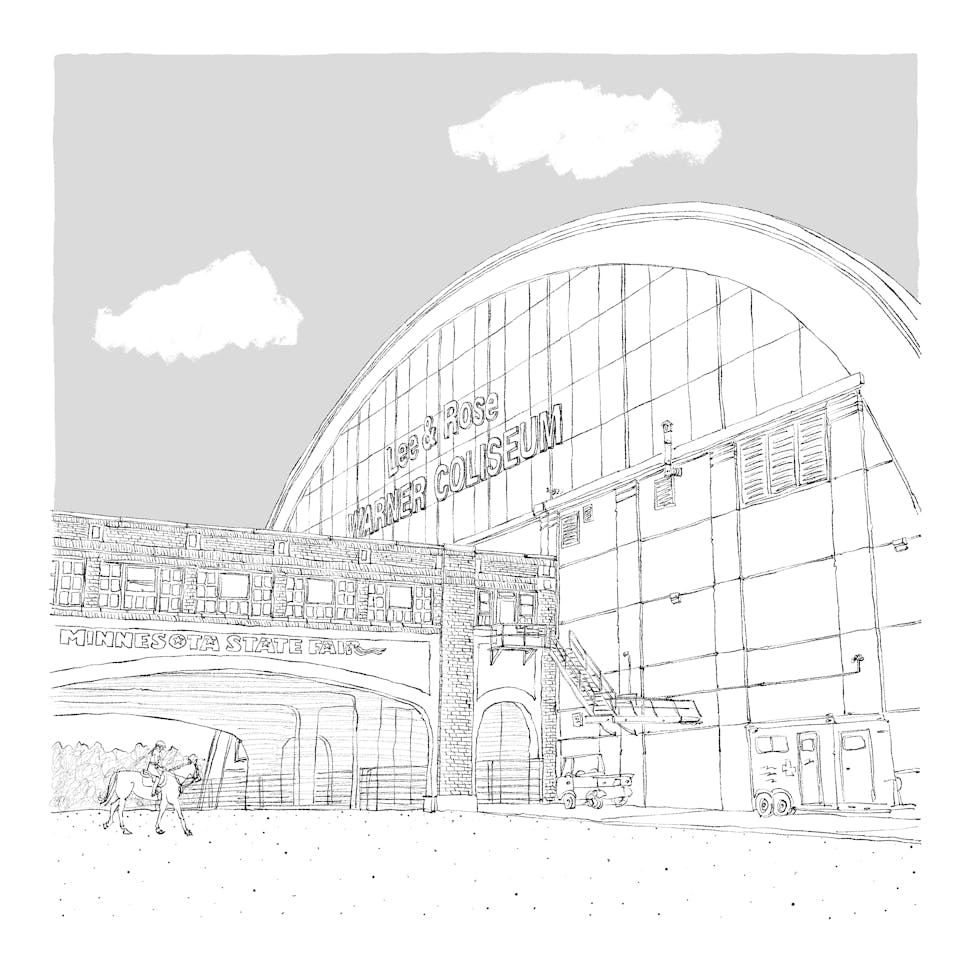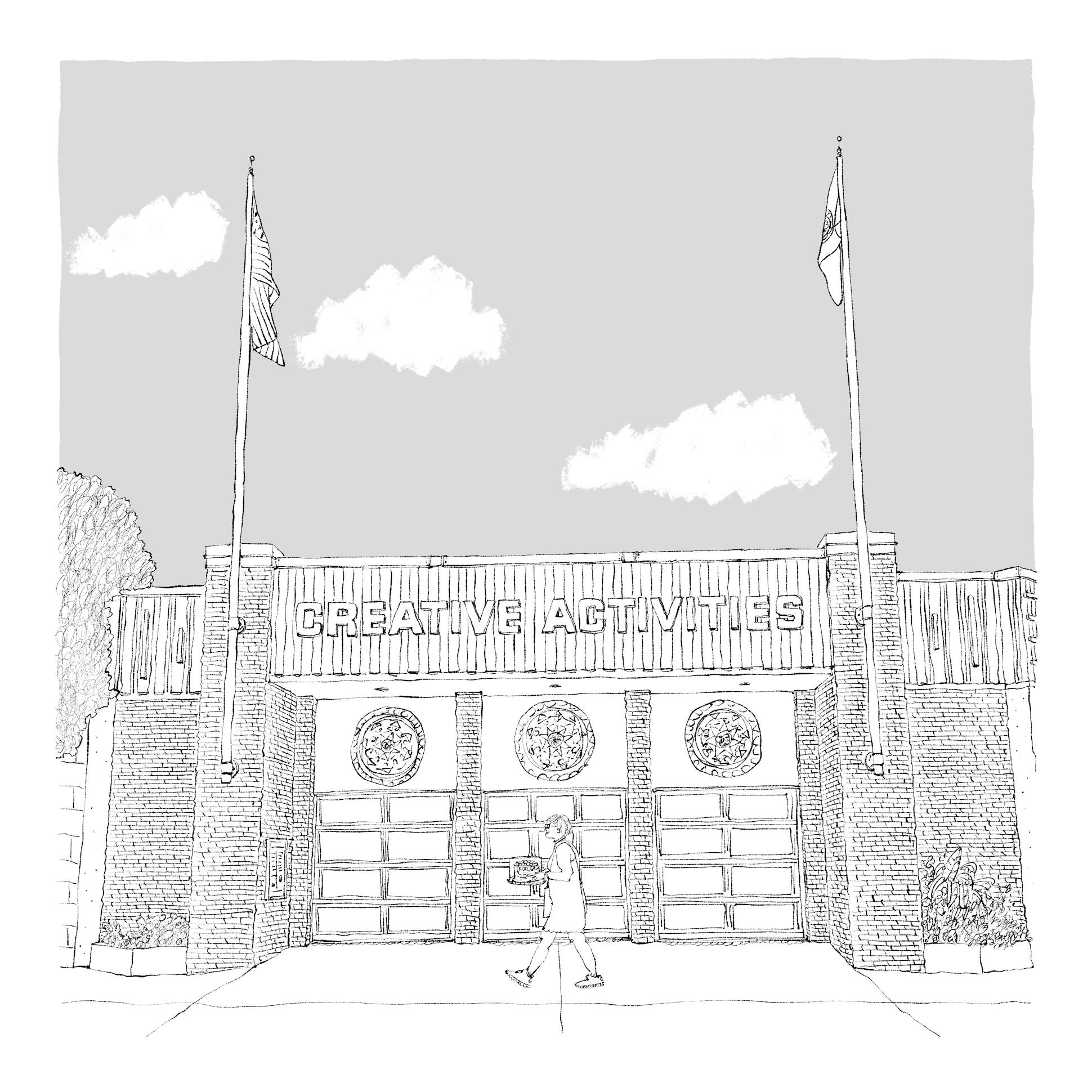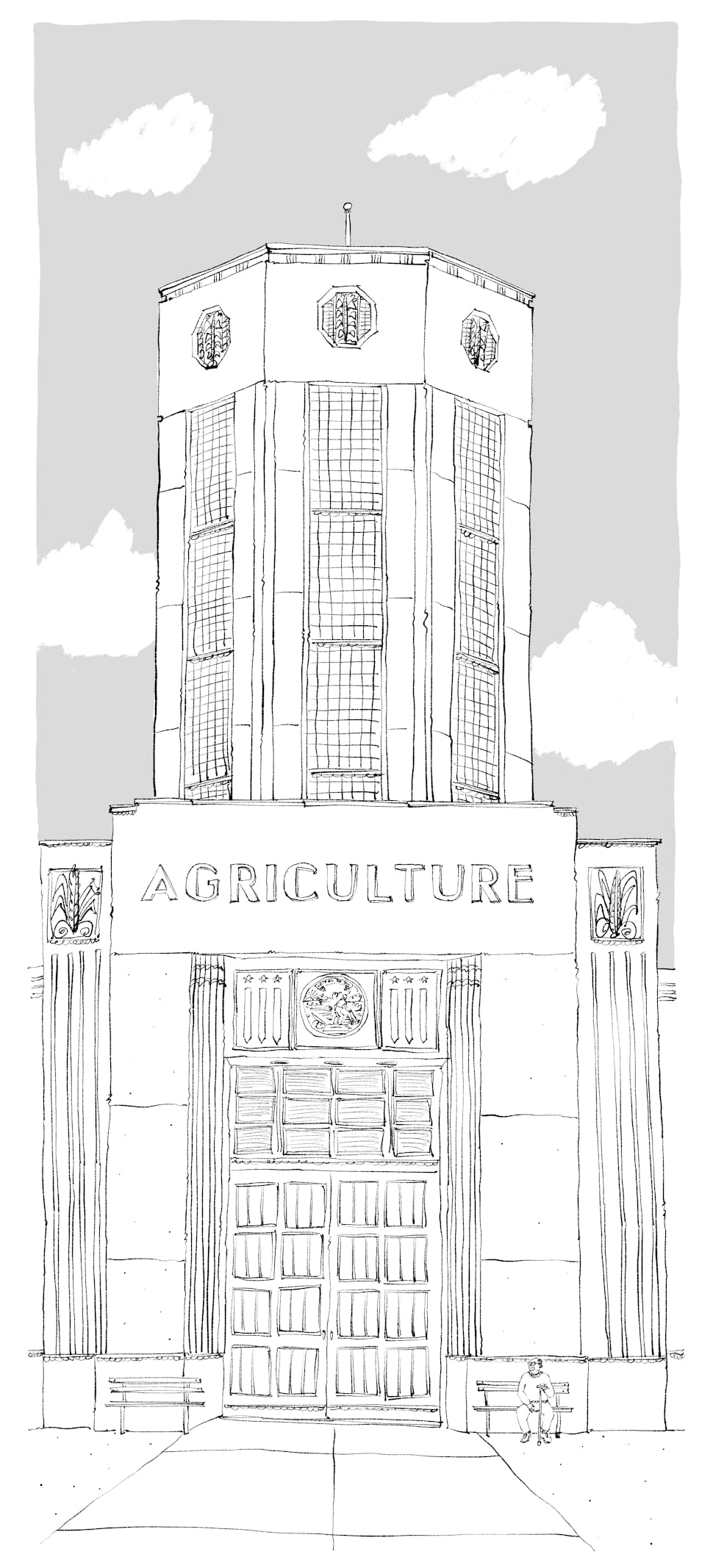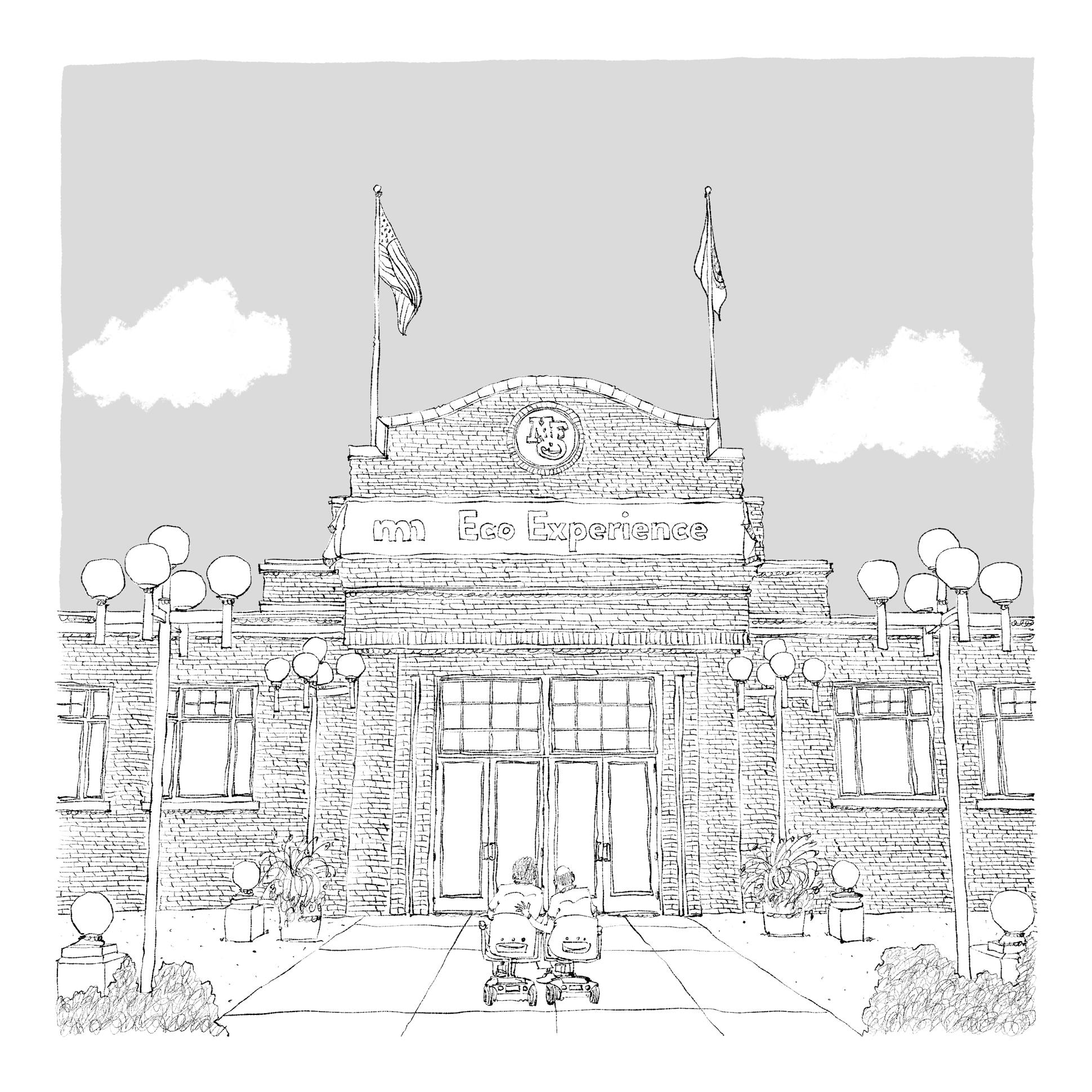Structures at the Minnesota State Fair built to last, but also to change
If these walls could talk, you'd hear a lot of interesting stories, of course, but the State Fair's historic structures continue to shelter young leaders, echo with the favorite songs of every era, and showcase regular Minnesotans doing their best work.
Lee and Rose Warner Coliseum
The original structure was known as the St. Paul Hippodrome (from hippo, Greek for horse), an arena for horse shows and livestock judging. In the winter, it became a skating rink and boasted the largest natural ice sheet in the world, home ice for the champion St. Paul Athletic Club hockey team. Players had to be in excellent shape since early rules called for 30-minute halves and no substitutions, according to the Vintage Minnesota Hockey website. It was converted, along with other livestock buildings, into a military propeller factory during World War II, which damaged its structural integrity. It was torn down, rebuilt and renamed the Coliseum in 1975. Hockey games continued there until 2014 — you could say it's one of the places that made Minnesota the State of Hockey.
4-H Building
With its white-and-green tower, the 4-H Building commands a view of the whole neighborhood and houses thousands of young people during the fair. The 4-H youth turn the building into a hub of creativity and innovation, through science exhibits, chef demonstrations, quiz bowls, leadership training and even a full-length musical. It was built after the 1938 State Fair by the Works Progress Administration (WPA).
Grandstand
The imposing building at the heart of the fair is famous for the luminaries it has brought to Minnesota, including legendary horse Dan Patch, singer Johnny Cash, soon-to-be-President Teddy Roosevelt, racecar driver Mario Andretti, "Minnesota March" composer John Philip Sousa, silent-movie star Buster Keaton, pop duo Sonny and Cher, TV host Bob Hope, and folk group Peter, Paul and Mary. A rickety two-deck wooden grandstand went up in 1855; the current structure was built in 1909. A dizzying variety of thrills and shows have marched through the lineup, from airplane stunts to horse and auto races to Roosevelt's "Speak softly and carry a big stick" speech, to re-enactments such as "The Burning of Rome," featuring one familiar aspect: fireworks. Today's shows — the grandstand turned to music in 1962 — carry on the tradition of variety, with a much lower risk of bodily harm.
Horse Barn
All of the animal barns on that side of the fairgrounds were enlisted in the war effort, turned over to military manufacturing during WWII. The Horse Barn was built in 1937, another WPA project, and can house up to 500 horses at a time. During the fair and the annual Horse Expo, visitors might get to pat a miniature horse, about the size of a big dog, or a Percheron, which can weigh 2,000 pounds.
Creative Activities
The present structure was built in 1971; it replaced the Home Activities Building, which replaced the Woman's Building, which replaced the Manufacturer's Building, erected in 1904. Its tall glass cases are crammed with all manner of homegrown creativity, all reviewed by judges expert in knitting, baking, canning, woodworking, needlework and lots of other crafts.
Agriculture/Horticulture Building
This cavernous, octagonal building sits on the footprint of the fair's first main building, a wooden-domed structure built for the first time the fair was held in its current spot, in 1885. Before the original building burned down in 1944, it gave Minnesota the largest permanent building devoted to the exhibition of agricultural products in the world. Today, visitors get to see the most impressive produce of farm and garden, a hive of beekeeping, flower-arranging, giant veggies, Christmas trees, shiny apples and, most famously, crop art.
Progress Center/Eco Experience
With the Fine Arts building, this is the oldest structure at the fairgrounds (both were built in 1907). It has hosted a broad array of fair activities: It was built to exhibit poultry, then display the Wonders of Technology, and now you can rent it out for a conference or Oktoberfest celebration. Or, during the fair, you can explore environmental sciences and learn practical ways to treat the Earth a little better.
Fine Arts Center
This oasis of relative quiet at the fair once echoed with hooves and moos — you could call its years as the dairy building the low-est point, if you liked puns. Now the building displays more than 300 works chosen from thousands of entries by Minnesota artists, plus a studio featuring an artist creating before our eyes. Any Minnesota resident can submit artwork, and it's free to enter. Jim Clark, the fair's fine arts superintendent for over a decade, told the Star Tribune last year that he always sees something new. When you stroll through this 116-year-old building, chances are you will, too.








